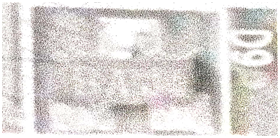Application of several common diodes
1. Schottky diode.
Schottky diodes are often used in the RTC (real time clock) circuit of the main board to realize that the RTC circuit is powered by the battery or standby voltage, and the time, date and startup items of the CMOS are saved. Schottky diodes have three pins in appearance, as shown in figure 1. The left and right feet are two positives, respectively, to connect the CMOS battery to the 3VSB standby power supply, and the upper leg is negative. Schottky diodes are commonly used in the motherboard, such as L43, L44, KL3, W1, BAT54C, etc.

Fig.1 Schottky diode physical diagram
Use Schottky Diode D 12 to generate VBAT voltage and power the mainboard RTC circuit as shown in figure 2. When the mainboard is unplugged, the 3V voltage of the battery BAT is delivered from the positive electrode through the resistor R247 to the 2 pin of the DI2, the 2 pin voltage is higher than the 3 pin voltage, the 2 pin and 3 pin diodes are switched on, and the VBAT. is obtained from the 3 pin output. While one pin has no voltage, one pin and three-pin diode cutoff. After the mainboard is connected to the main board, the power output 5VSB is obtained by R249 and R248 partial voltages to get 3.649 V voltage to the DI2 1 pin voltage is higher than 3 pin voltage, 1 pin and 3 pin diode conduction, output VBAT. from 3 pin. But the 2-pin voltage is less than 3-pin voltage, 2-pin and 3-pin diode cutoff, the battery does not discharge. After DI2 switching, the battery and standby power supply to get the VBAT voltage, make the battery power saving.
2. Clamp diode.
The clamping diode consists of two diodes in the same direction. Using clamping diodes next to the motherboard USB interface or VGA interface prevents other devices from entering the motherboard and causing damage to the motherboard. The common clamping diodes on the motherboard are A7W.
The application circuit of clamping diode is shown in Fig. 3. DI4 clamping diode Y pin is connected to 3.3V power supply, X pin is grounded, Z pin is connected to VGA_RED signal line.If the VGA_RED signal voltage is below-0.7 V, the Z-pin and X-pin diodes are on. If the VGA_RED signal voltage is higher than 4 V, Y pin and Z pin diodes are on. When the voltage clamp of VGA_RED signal is between -0.7 V and 4 V under the action of D14, even if the monitor leaks, it will not cause damage to the motherboard.

Fig.2 Schottky diode applied circuit diagram Fig.3Clamp diode application
circuit
3. Voltage regulator diode.
The Zener diode (see figure 4) essentially stabilizes an input voltage at a fixed voltage output. When the diode reverse voltage is large enough to a certain value, the diode reverse current will suddenly increase, which makes the diode conduction, which is called breakdown phenomenon. The steady voltage can be achieved by using the characteristics that the current passing through the tube changes greatly and the voltage at both ends of the tube is almost invariable.

Fig.4 Voltage regulator diode symbol
If you want to know more, our website has product specifications for diodes, you can go to ALLICDATA ELECTRONICS LIMITED to get more information.

